"There is no routine": Myanmar artist Zaw Win Pe talks art
We grabbed Myanmar artist Zaw Win Pe, whose exhibition Motley & Me is on until Feb 15, for a quick chat.
What inspired this exhibition?
I was inspired by a monk's preaching. He said that we could find new creations within ourselves even when we abandon notions of what's good and what's not. The works in Motley & Me were created freestyle, without control or borders. I created them not because I wanted to create "good" art, but because they were what I really like and want to paint.
Tell us a bit about your previous shows.
I had two exhibitions last year, Natural Person and A Tale of Two Tribes. Natural Person was shown at Suvannabhumi Art Gallery in Chiang Mai. In that exhibition, I only displayed portraits of my neighbors to demonstrate the importance of grassroots participation as Myanmar is undergoing political change.
The exhibition A Tale of Two Tribes with Nguyen Quang Huy was at Thavibu Gallery in Bangkok. In these paintings, my inspiration was from Shan State. Colors are usually my main focus, but I wanted my works to reflect my art philosophy as well.
What’s your daily routine like?
There is no routine. Sometimes, I just read without painting anything; sometimes I draw sketches for the whole week. If I paint, I paint a lot continuously. I like to listen to music, too.
What's your ambition as an artist?
I have the capability to create paintings with emotion, thought and skill. But I want to create works without any boundaries. My motto is: “Never stop painting till the day I die.”
Motley & Me is on through Feb 15 at Art Seasons Gallery.
Advertisement
Many people have to pay their dues to be great at their sport. What do dancers have to do?
With wanting to be good at anything, time is often compromised. Therefore you will have less time to do and try other things that you perhaps would have liked to do. I would say I had a pretty normal childhood as I didn’t train so intensively until I was in my teens. Some of my friends were sent off to boarding school away from their families to train when they were 11. Dance is also an art form where you have to be aesthetically pleasing. Sometimes dancers have to watch their diet, if they are not blessed with a good physique. Spending extra time outside work hours upping fitness levels is also something that we do.
What's the holy grail for ballet dancers around the world?
Finding yourself and to be that unique individual when you dance. Striving to be as 'perfect' as possible is also something that every dancer works hard for, even though it's impossible to be 'perfect'. There is virtually no end point for anything. We do class and rehearsals daily to keep improving and refining our technique. You finish your career and you're still not perfect. You just get better, develop artistically and are more of an artist than a technician or student, hopefully.
Who's your greatest mentor?
I have been blessed with many great teachers and mentors so far and picking one out is almost impossible. Each of them has been vital in nurturing me at different stages of my training and career.
If you'd not gone down this path, what do you think you would be doing today?
At the moment I know that I want to be a physiotherapist for dancers or athletes in general when I retire or can't continue dancing, for whatever reason it may be. If I hadn't gone down this path, I would perhaps choose to do something related to the medical field. I have a great interest in the sciences, especially biology.
You trained in London for a few years. Is there anything you miss?
The one thing I miss a lot about London is the vibrancy of the arts scene and how people are very open, receptive and appreciative of the arts. I don't think this is something we can emulate but needs time to cultivate and educate to change certain stereotypes and mindsets. Having said that, I feel that it is a lot better now compared to a decade ago. More money has been pumped into the arts and with School of the Arts (SOTA) around we are hopefully educating a generation that would be involved and appreciative of the arts. Things are moving forward, slowly.
Why should people see Romeo & Juliet?
Firstly, Prokofiev (Russian composer) is a genius whose score alone tells the story. Secondly, Romeo and Juliet is a timeless classic.
What do you have to say to up-and-coming dancers?
Work very hard, work smart and work for yourselves. Be humble and receptive to learning. Lastly, lots of determination.
Elaine Heng performs in Romeo & Juliet on Mar 13-16, various times. $30-70 from Sistic.
Advertisement
How did you get started?
When I was a little boy, I used my imagination and hands to create my own toys. These toys were usually made from cardboard, stationery, accessories and other odds and ends. After picking up art and craft in primary school, I got hooked on assembling my own model airplanes, skeletons of dinosaurs and the like. Starting from scratch was always my kind of thing.
What’s the most exciting thing about this job?
Architectural model-making is a team effort. It is a combination of the hard work and skills of different people. After putting in all that time and effort, the satisfaction comes when you see the completed models. The job also gives me a sneak peek into Singapore’s future developments.
Do you ever fantasize about living in the miniature homes you make?
Sometimes when I’m making the models, I do try to imagine how it would be like to be physically in these developments. This helps me better understand the designs of the architect or planner.
Do you pay great attention to detail in other aspects of your life too?
Yes, organization is part and parcel of my life, whether it be at work or at home. At work, I like to organise my work space in a certain way. Back home, the clothes in my wardrobe are also arranged in a certain pattern. During vacations, I pay a lot of attention to how I pack my luggage. I will make a list of necessary items and go down the list as I pack. My wife is more spontaneous—she would just grab and go! And when I’m overseas, I find that I pay more attention to anything that has intricate details. I like to think about what goes on behind the making of these objects.
How much flexibility do you have in making your models under the URA? Do you try to sneak in any “signature moves”?
Due to the design requests of architects and planners, we sometimes have the opportunity to try new ideas and methods of model-making. With that said, we do have to discuss with the architects and planners before new techniques are implemented. Model-making is an art form that is learnt through a lot of practice. Through the years, each model maker has developed his or her own distinct style. We do use hand carving for the finishing touches. Hence, each model feels handmade.
What do you think about Singapore’s development as a city? Do you think it’s moving at a good pace or too fast?
I have seen the transitions of the models to real-life buildings myself and these developments are wonderful and exciting. In fact, many cities are learning from us. But as society matures, we need to find a balance between economic progress and conservation. I feel more can be done to understand Singapore’s iconic structures and its surroundings before they are redeveloped.
Advertisement
It’s been a few years since MLTR performed in Singapore. Where’s the band been touring?
We’ve been visiting places such as Burma, Bangladesh, Nepal, Dubai, and other Asian countries—we’re always planning concerts and recording new music.
Why do you think Asia is one of MLTR’s biggest fan bases?
I think the way the songs are composed —melodic, romantic, easy to sing along to—is something that appeals to our Asian audiences.
What’s the secret to your longevity?
Our fans really motivate us and give us the energy to make new music.
How has touring changed for you over the years?
Our first years in Asia were very busy—there were so many interviews to attend, and as a result, we didn’t have a lot of time to sightsee. It’s a lot less hectic now, so we have time to relax and take in the sights of each city.
Which artists would MLTR like to collaborate with?
We would have loved to collaborate with Michael Jackson and Whitney Houston, but they’re no longer around, unfortunately. We would love to play with Bruno Mars.
What are the top three songs in your playlist right now?
I’m currently listening to “My Love is Your Love” by Whitney Houston, “Get Lucky” by Daft Punk, and some Justin Timberlake.
What has been your most memorable concert to date?
Our first concert in Singapore, in the 1990s, was really memorable. We had been performing at a lot of small gigs before that and we suddenly found ourselves in a huge stadium with screaming fans. It was really something.
Michael Learns to Rock performs on Feb 22 at The MAX Pavillion @ Singapore Expo, 7.30pm. $78-158 from Sistic.
Advertisement
What is sound art and why does it matter?
Bani Haykal and Joleen Loh: We’re glad you asked. What is important for us in this project is the recognition that the term "sound art" can be problematic for artists and constricting, and the dynamic range of sonic practices or usage of sound as a medium of expression in this exhibition will suggest that the debate of "sound art" versus "music" is less crucial than active listening. In our role as curators for this show, we sought to be attentive to sound’s specificities. It is durational and requires time from its audiences, for instance. It is also a medium that refuses simplistic signifiers and easy interpretation, and we’ve found it crucial to leave the interpretation of experience and meaning to audiences. More than anything else, it should be thought of as an open-ended concept. Sound contributes to our day-to-day life and shapes our perception and we often do not contemplate it enough.
What can we expect at the exhibition?
Bani Haykal and Joleen Loh: There are 5 components to this exhibition: listening stations, sound installations, sound scores, sound performances, and an archive of sonic practices in Singapore developed by Mark Wong. Across these components, we want to share with audiences the joys and complexities of listening by artists who are completely in love with it, artists who are obsessed with experiencing it from different perspectives, and artists who have concerned themselves with what it means to listen, think about, and express with sound.
Bani, do you think your background as a musician matters when it comes to art?
Bani Haykal: As a musician, I would experience a visual work from a different perspective and, likewise, a sculptor will likely experience a sonic work from another perspective altogether. It is how an individual calls their sonic experience that matters, be it noise, musical, functional, emotional etc. Sound, in some ways, has been an unsung hero; from the traffic light sounds to sound design in film and music production, sound is a physical force first, which usually only gets remembered or acknowledged from an aural perspective.
How did you decide who to feature, and what was the process like?
Bani Haykal: We initially had a pretty long list, which surprised us. But even then, the selection began with folks whose practices we have interest in and who have been pushing the parameters of thinking sonically. It was quite a bit of going back and forth between Joleen and I, as well as with some of the artists we were hoping to involve in the project. It is through this process that we shaped our direction towards this "monster" that is sound art, and therefore stayed away from calling this an exhibition about just that. The conversations we had with the artists provided us with insight to not just their work, but also the attitudes inherent in their respective practices. These conversations shaped the exhibition significantly.
What do you think the perception of sound in the arts is like in Singapore?
Joleen Loh: In terms of art history and criticism in Singapore, sound and visual arts have often been regarded quite separately although this is not unique to Singapore. This happens for many reasons: The developments and key events related to sound often take place in unconventional or alternative venues and are easily overlooked or have little documentation to speak of, and art museums have been more visual arts-oriented and don’t have the infrastructure to accommodate sound works. These are just two of many reasons. Elsewhere, it’s somewhat more accepted and prevalent; take MOMA’s recent major exhibition Soundings and ZKM’s Sound Art. Sound as Medium of Art, for instance.
Bani Haykal: Despite all Joleen said, I'm not sure if it's something we should concern ourselves with. I'm more interested in sharing new experiences and allowing individuals to formulate their own thoughts and truths after their encounter. That's far more interesting.
SOUND: Latitudes and Attitudes is on from Feb 7-Mar 16 at Earl Lu Gallery, LASALLE College of the Arts.
Advertisement
Some artists get disillusioned with what they're doing or even what they're called. Have you guys mixed things up a little over the past 17 years?
Sham: Yes we change the sound and approach to song writing. Our priorities are different now.
Jon: You can't be in a certain specific genre and expect that you'll be fresh all the time. Even jazz adds things different every single time they play. While we've tried to be faithful to what we did well, we've played around a little bit here and there.
What's your secret to staying together for so long?
S: Just making time for the band and cool wives, and of course loving what we do.
How does it feel to be classified with the big names out there around the region?
S: It’s nice and we feel honoured to be classified with the big names—but then again we don't really do much. We’re a simple sing-along rock band.
J: Nice but it’s not one of our priorities. Just tried to be the best we could and not a regional thing—that was a bonus. I think when we started out, things like this weren't available to local bands, so we never had this sense of expectation that things like this would happen.
What's touring like these days? Have your energy levels changed at all?
S: Touring nowadays consist of staying in the hotel room, finding places to eat, sound checks, getting as much rest as we can so that we can release all the energy on stage.
J: We’re very chill by comparison. I think going out for beers and maybe a bottle of something at the hotel room--that's about it. if there's time, then we talk about everthing else. I guess the most unusual was when we went to Manila—a couple of us went to a public firing range and tried out a whole bunch of handguns. Apart from things like that, I'll go look for a bar and watch the football match.
You guys featured plenty of local bands and artists in the latest EP, The Gift. How was coming out with that album like?
J: I think we never really met any of them as everyone's busy. But there's always been a good vibe whenever we see them on the street or at gigs, so I guess it carried on right through the project. We didn't interfere with them; we just wanted to let them get their idea out and it usually ended up sounding better than ours.
How much faith do you have in the local scene? What are some of your reservations about it?
S: it would be great if all radio stations play Singaporean music.
J: I think we need to work harder, personally. There are some really hardworking bands out there, like Caracal, Inch Chua—I applaud them thoroughly. But as a whole, I feel as if I want to say to the younger guys to stop waiting for one of those big opportunities to come by and be prepared to build a following the old-fashioned way—playing live in front of people, not on YouTube.
Wise words for bands starting out?
S: Practice, practice and practice.
J: Similar to the previous question, which is aiming for a slow build-up following at your live shows. Also, check your heart. If you come up with a sense of entitlement, like you’re waiting for someone else to 'discover' you and not bother to practice or look for hard gigs, that breakthrough may not happen.
What's the weirdest request you've received from a fan?
J: Not so much weird I guess; someone once had a birthday surprise at a practice. We'd planned it with her friends so that they surprised her and took her to our practice, blindfolded. She took off the blindfold and we played her a song. I thought that was unusual, flattering and sweet. But no weird requests like used boxer shorts or something—I think we're too boring for that.
Describe to us in detail your typical listener.
S: He or she would not be shy to sing his heart out at a Plainsunset show.
J: I agree. I think we appeal to folks who like live explosive shows, and understand that we don't particularly follow trends.
If your band was a cocktail, what would it be called?
S: We'll be called the ‘Green Monster’.
Plainsunset will be performing their 10th Anniversary Show at Tab on Feb 8. Tickets at $20.
Advertisement
 |
Chillax in Singapore withTwo Popetorn
|

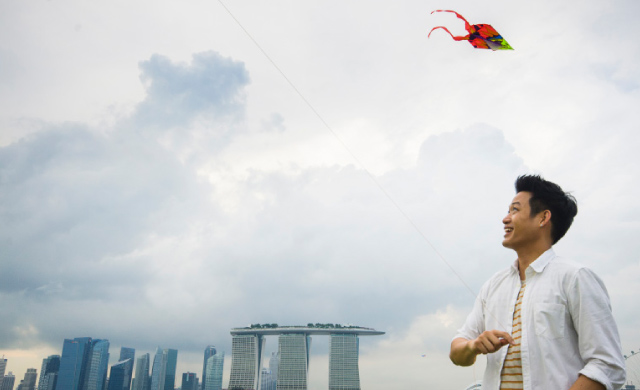

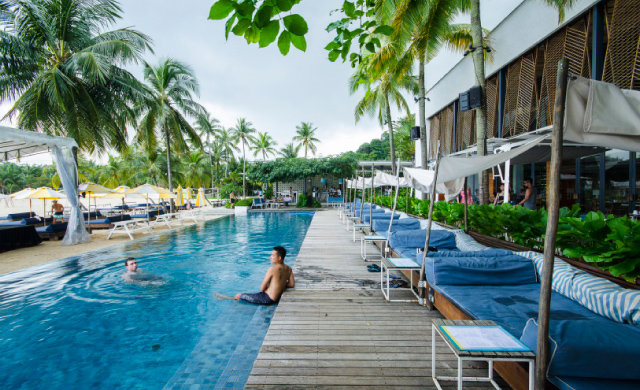

If you’re in the mood to play or unwind in a wide-open space, head to the Marina Barrage, the charming walkway built across the Marina Channel. Since first opening, this place has become a favorite spot for locals who love to just kick back by the sea. Due to the strong winds, many people come here to fly kites. Another popular spot for weekenders is Tanjong Beach Walk, where you can enjoy fresh air, sun, sea and sand. Strolling along the beach is a blissful experience. You can drop by Tanjong Beach Club, where they serve an all-day menu. It’s also a great place for a romantic dinner to top off your evening.
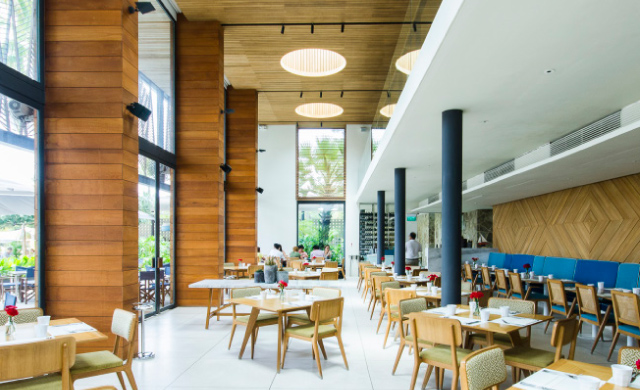
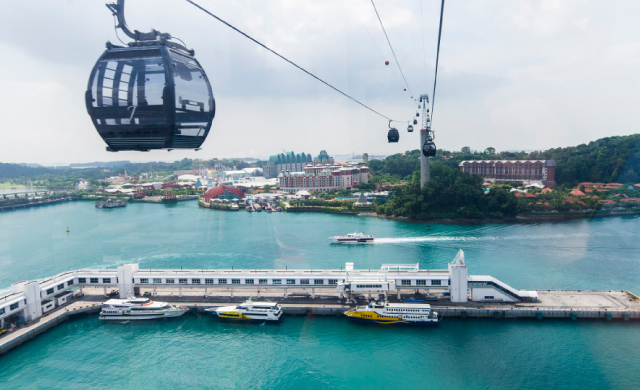
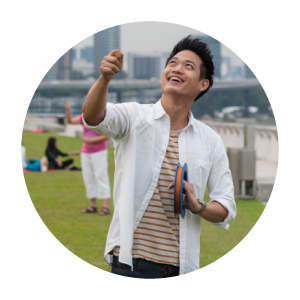
“Marina Barrage is a good place to meet locals as they love to come here to spend time together, especially to fly kites as the wind here is so strong. Another surprise for me is the white sands of Tanjong Beach Walk. It’s really one of the most gorgeous places in Singapore.”

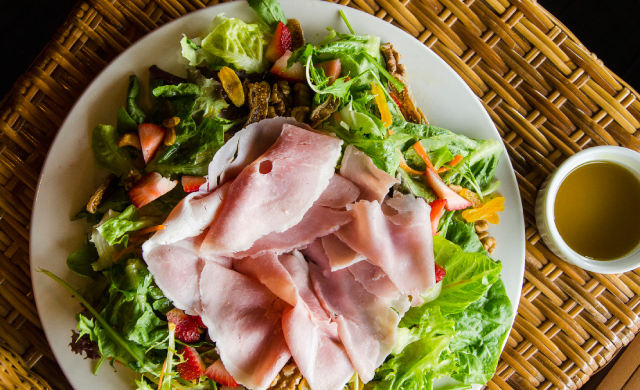
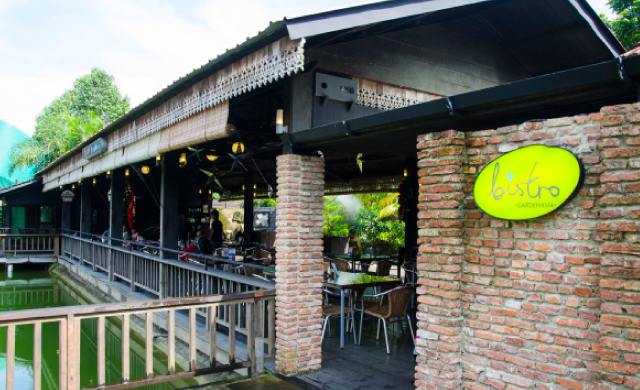
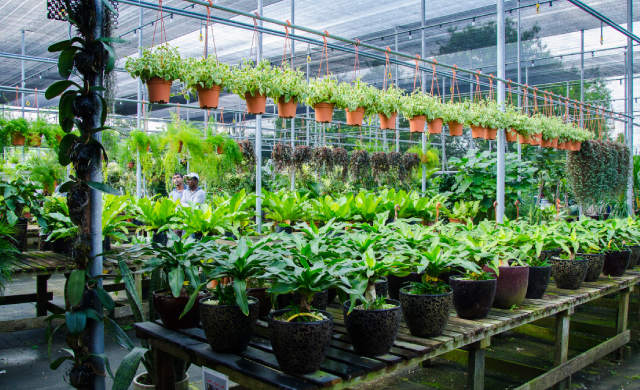

Singapore is well-known for its splendid skyline dotted with modern architectural wonders, as well as its very hip and happening lifestyle. But a trip to Singapore isn’t complete without a trip to the countryside. Yes, countryside. It’s called Kranji Countryside, a large green area out of the city center that’s packed with organic farms as well as animal farms. One such place is Jurong Frog Farm (56 Lim Chu Kang Lane 6, (65) 6791-7229. www.jurongfrogfarm.com.sg), which is open to the public every weekend to give people a chance to play with and learn about giant frogs. While here, you must make the effort to feast at Bistro by Gardenasia (240 Neo Tiew Crescent, (65) 6898-91111, open Wed-Thu 11am-6pm, Fri-Sat 11am-11pm, Sun and public holiday 10am-6pm. www.gardenasia.com), which offers a mix of French and Singaporean cuisines—don’t miss their Hokkien pasta with jumbo prawns.
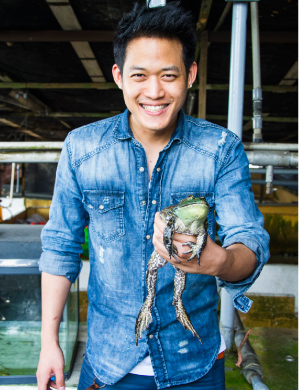
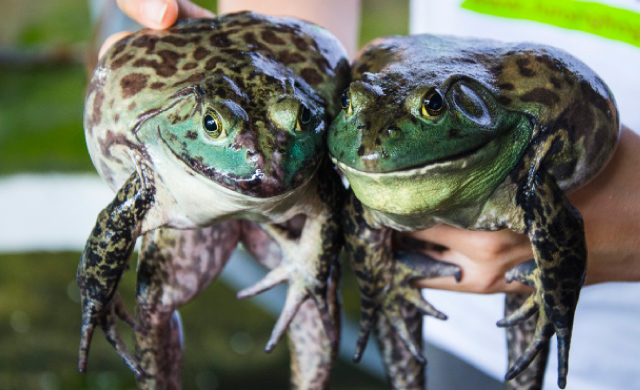
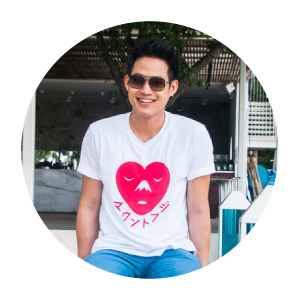
“The trip to Singapore’s countryside was full of surprises. I never knew that such a modern country would have such beautiful natural scenery. The food at Bistro is so delicious!”






Ever dreamt of walking on clouds? Cloud Forest (open daily 9am-9pm, www.gardensbythebay.com.sg) at Gardens by the Bay is the place for you. When you first walk into this giant glass house, you will feel the sprinkle of a waterfall that streams down from the 35-meter-tall man-made tropical mountain. Slowly hike to the top or take an elevator then learn all about local biodiversity and geology amid the clouds. Don’t forget to take a tour around Supertree Grove, which is beautiful by day and simply stunning by night.
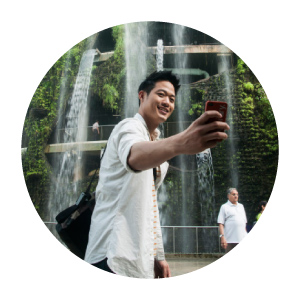
“I was amazed by the grandiose tropical forest and mountain they created in a giant glass house. Walking in the clouds is unbelievable. It’s mysterious and marvelous at the same time.”





Walking in the blazing heat of Bangkok might make you wish someone would grow a forest in the middle of the city. Well, Singapore has actually done that. Not far from Orchard Road, next to the hip neighborhood on Holland Road, is Singapore’s oldest national park, Singapore Botanic Gardens (1 Cluny Road, (65) 6471-7138, 6471-7361. www.sbg.org.sg). With its large area spanning more than 183 acres, this green space is open to everyone from 5am till midnight. The must-visit here is National Orchid Garden (open daily 8:30am-7pm, last ticket sales at 6pm), a veritable wonderland home to more than 1,000 species and 2,000 hybrids of orchids. It’s also worth paying a visit to Evolution Garden and Cool House, the former lets you walk along a trail lined with prehistoric trees like ferns and cycads, while the latter is a tropical forest set within a beautiful glass house.
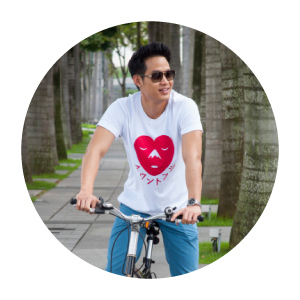
“The National Orchid Garden here is completely amazing. I’ve seen flower gardens in Thailand before but this one is sensational—a whole garden full of different kinds of orchids!”

Chill Out to the Max in Singapore
Advertisement
I’m in love with books. I love to do anything related to books. That’s why I’m a writer, editor, publisher and bookshop owner.
Good manuscripts drove me to launch Rawang Bantad [Between the Lines] Publishing. I worked as a freelance editor and received many manuscripts to edit, one of which was Prabda Yoon’s Pab Mai Ning [Moving Pictures]. My friends encouraged me to start a publishing house to offer an alternative to readers.
Publishers must be at the center of all book circles. We need to know the writers, meet the financial backers, and negotiate with distributors. We need connections.
My joy at exploring the journeys in each book made me jump into the bookshop business. My work used to end at the printers or with the distributors. But with Candide Bookstore now I actually get to put those books in readers’ hands.
Independent bookshops give readers more choice. Candide tries to push books that are interesting and which people might not know exist. It helps small publishers, too. They can produce books in small runs of about 1,500 copies instead of the 5,000 copies that big chains demand.
Running two businesses by myself was really exhausting. I was editor of my publishing house and running the bookshop at the same time. I had less and less time to edit work. So when our lease at the old place came to an end, I decided to close Candide.
Book publishers are to blame for people not loving to read. Make books to serve readers, not your own needs. We need to do everything we can to make books attractive to them.
I love books that move me in some way. I used to love Haruki Murakami because the messages he communicated were so right for me. I would feel run-down after reading one of his book. His works sucked up all my strength. He’s not my favorite now, though, as his recent books are pretty mainstream.
Paperbacks won’t disappear, even though this is the digital age. E-book sales are really slow here. Readers still love the real thing.
E-readers are just gadgets. I used to be excited about e-books and would buy many for my iPad. But in the end, I wouldn’t read them all. It’s too much! I’ve stopped reading them.
Value readers no matter what they are reading. Many people think teen novels like Jamsai Publisher or Dek-D.com are rubbish but I don’t see it that way. You don’t need to read serious novels to be a good reader. It’s about nurturing people to read. One day, they will move on to another level to read about other topics.
There is no profession that needs freedom more than writers. Freedom of expression is a writer’s biggest tool. That’s why I signed the petition to fix article 112, which protects the monarchy, because it’s nearly impossible to express our ideas on the topic of politics. Some people try to twist this by saying we’re against the monarchy.
Thai society needs the monarchy, myself included. I still enjoy watching the royal news every night. But in terms of expression, we need to change the law.
There is no space to be neutral in politics. It’s pretty sad that we’re pushed to the other side if we don’t agree with the red shirts or yellow shirts. Each side thinks that people have to fall in line with one way of thinking. That’s why nothing comes of it.
Reading can solve political problems. Reading opens your mind, so if each side starts reading up on each other’s thoughts, we can start talking. But the problem is each side wants to shut down the other side’s opinions. Anyone can just go to the police station and say you’re against the monarchy.
I’m disappointed by our politics. I used to admire ex-prime minister Chuang Leekpai, but I lost all my faith in the Democrat Party after the killings during the 2010 protests.
We’re at the lowest point of democracy now. It’s ridiculous that we are in 2014 and we still need to beg people to go to vote.
Democracy has shown over time that it’s the best option. You pick the representatives who work for you. If they do poorly, wait another four years to vote new ones in. But now it seems many Thai people can’t wait. On the other hand, many people will fight for Thaksin, not because they love him, but because he was ousted by a coup d’état.
I might vote for the Democrats in this election, if they run. I want them to know how graceful it is to win an election fairly.
It’s distressing that the fate of our country is now in the hands of the Constitutional Court. No matter if something’s voted in by parliament, it still comes down to the court to decide. The parliament, as voted for by the people, should wield ultimate power.
See every day as a challenge. What’s the point of living if you wake up and it’s just another boring day?
Advertisement
When did you become interested in transgender and transsexuality?
I had read about the subject when I was in France, where I came across an article on Bugis Street and grew curious about it.
Tell us the story behind this collection of portraits.
When I arrived in Singapore in February 1981, I was dreaming of becoming a professional photographer. I bought a Nikon camera and began to spend my nights in Bugis, in a neighborhood of old Chinese houses. There, I met Anita, a Malaysian transsexual, who then introduced me to her community.
What was your relationship with the community like?
I was 23 years old then and most of the girls were about the same age, so little by little we grew closer. They liked having me photograph them and would pose like stars. I wanted to show their femininity. I was fascinated by their ambiguous identity and inner strength living as outcasts on the edges of society. There was always a sense of melancholy—for the old lives they left behind, and for the injustice of their new, hard lives.
What do you like most about the photos?
I love the beautiful night lights, a mix of artificial lights that result in strange colors. The girls’ poses also add to that feeling of cinematographic artificiality—it reminds me of the atmosphere of Wong Kar Wai films. Maybe I was drawn to Bugis Street because it looked to me, unconsciously, like a film set.
What do you want your audience to get out of the show?
An open window to Singapore during the eighties. Bugis Street’s nightlife was world famous at the time. Even though the scene has made way for consumerism, it’s still part of Singapore’s history.
Bugis Street is on from Jan 30-Feb 17 at Objectifs, 56A Arab St., 6293-9782, www.objectifs.com.sg.
Advertisement
Tell us about the exhibition.
I created three fine ink paintings and three large charcoal drawings that look like ocean waves, river currents and waterfalls from a distance. However, upon closer inspection, you can see that each image is made up of strands of hair that represent my identity.
What was the inspiration?
I’m inspired by the natural environment of the Pacific Ocean (as experienced in California, where I lived for seven years) and the Yellow River in my homeland, China.
What’s the process like?
It’s very time consuming, especially for the large scale charcoal drawings. I always begin with a small study first and work on a larger size second. I also take pictures of my own hair as reference to get detailed information. For large works, I start with a light composition and then work on sections with details and darkness.
How does your current exhibition relate to your past works?
I have been working with hair imagery since 2000. In my early work, I used the disembodied image of long, straight, black hair to represent my own identity through a series of large scale charcoal family portraits. Then I combined my hair with everyday objects to create a second series of small graphite drawings and oil paintings that evoke different emotions through a surrealistic approach.
What aspects of your art are you most proud of?
My work is a mix of traditional skills with contemporary ideas. It’s a combination of craftsmanship—I’ve trained in Chinese ink medium and use charcoal on a monumental scale—and a modern hair/water concept that explores identity.
Advertisement